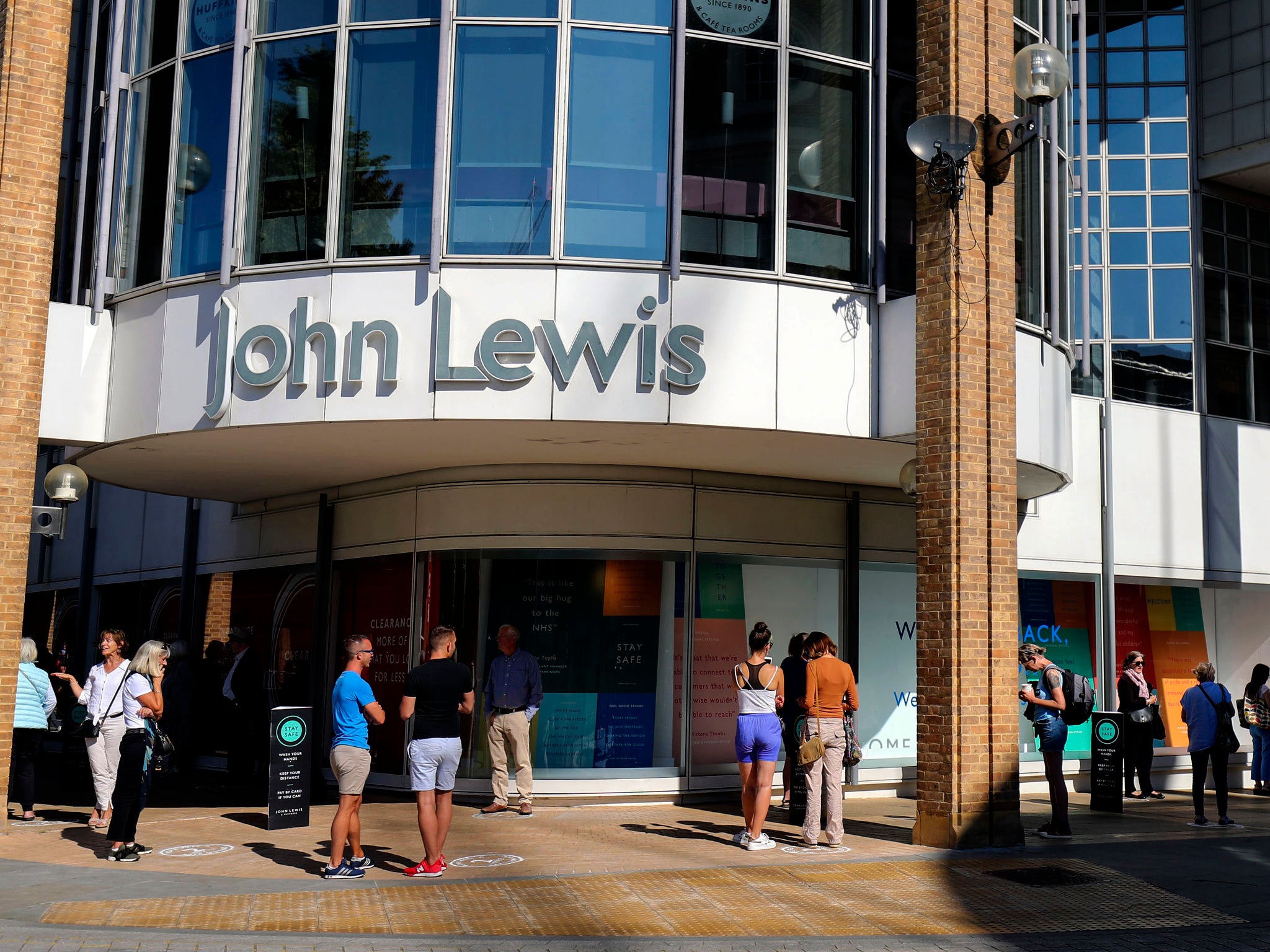Why loss-making John Lewis needed Rishi Sunak’s help despite Waitrose surge
The partnership is planning to close more stores, and while it made a trading profit before a huge write-down that was only because of government support such as the business rate holiday, writes James Moore


When the supermarkets were bounced into paying back the business rate holidays they didn’t need, amid surging sales and bumper profits, there was one notable exception: Waitrose.
The supermarket chain has done well through the course of the pandemic, as has the whole sector. Its online arm is positively booming.
But it’s in a different category to its peers through being part of the John Lewis Partnership, which has just announced that it lost more than half a billion pounds over its most recent financial year and warned that at least some of its shuttered stores will never reopen.
Now, as with the financial results of any big business, the partnership’s numbers take a bit of unpicking. That huge loss is largely due to the accumulation of £648m of one-off nasties, or exceptional items in city speak, the chief component of which is an enormous write down to the value of the John Lewis store estate. Its carrying value on the partnership’s books, which once stood at £1.2bn, has been cut in half.
That is, obviously, a non-cash item but bear in mind that the write down has only been forced upon the business because of the stores’ struggles. Some £6 in every £10 spent at John Lewis, a so called “bricks and clicks” retailer, was channelled through them prior to the pandemic. That number has fallen to £3. While there should be something of a recovery when non-essential stores are allowed to reopen, it won’t all flow back.
Exclude that enormous one-off and what you find is that the business made a trading profit of £131m, which is £61m better than the previous year. But that figure is something of a mirage. It’s only there because of the government support, which propped the partnership up to the tune of £190m. Surging online sales across the business, and the success of Waitrose’s supermarkets, haven’t been sufficient to overcome the damage inflicted by the pandemic.
We don’t yet know how many John Lewis stores will never reopen. We do know that the final number would be a lot higher were it not for measures such as chancellor Rishi Sunak’s business rate holiday and the furlough scheme.
Given it’s making money, shouldn’t the Partnership pay a portion of the money back? Perhaps Waitrose’s share? This is a case some might make. I’m not among them for this reason: there was a furore created by the supermarkets’ business rate holidays, at least before they paid them back, because they were showering dividends on their shareholders while taking the money.
The partnership isn’t doing the same thing. Its equivalent of dividends are the bonuses paid to the staff, or rather, the partners who own the business they work for. This year, for the first time in decades, they will have to do without. They aren’t likely to get a payout next year either. The business has said it won’t be able to offer one until its profits are “sustainably above £150m”.
If CEO Sharon White’s five-year transformation plan hits its targets, that might come in the 2022/23 financial year. Does that look overly optimistic given the outlook?
Maybe not. People with disposable incomes have built up a lot of savings, some of which they may be inclined to spend when non-essential stores reopen.
White also some interesting ideas for getting the business motoring again. Kitchenware and suchlike, sold by Waitrose, will in future feature the John Lewis brand. The partnership is also trialling what will be, in effect, mini John Lewis concessions in Waitrose stores. This feels somewhat similar to what Sainsbury’s does with Argos except people will be able to see and touch the merchandise. We may also see some smaller, more local, formats opening.
That’s not to suggest that the going will be anything other than heavy for this iconic retailer. But without the support it has received it could have been mired in a bog.
This is a business that plays an important role on the high street, has the capacity to invest and think longer term than its rivals through its partnership structure, and can provide at least a modicum of competition to the behemoth that is Amazon. As such, the payments were justifiable.
Before joining joining John Lewis, White was CEO of Ofcom, the media regulator, which is now having to deal with overseeing Twitter, Facebook, and Andrew Neil’s attempt to launch what looks like a UK version of Rupert Murdoch’s Fox News. All that and Piers Morgan (who may ultimately end up working at the latter).
A cursory glance at Lewis’s results and you’d be forgiven for thinking that she’d stepped out the frying pan and into a raging inferno. But maybe not. There is a chink of light discernible at the end of John Lewis’s tunnel.



Join our commenting forum
Join thought-provoking conversations, follow other Independent readers and see their replies
Comments